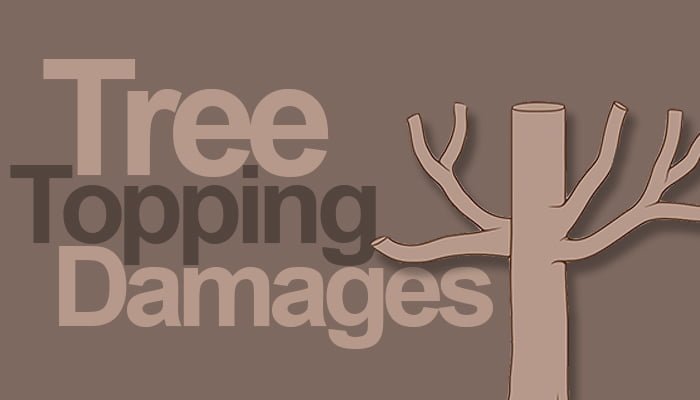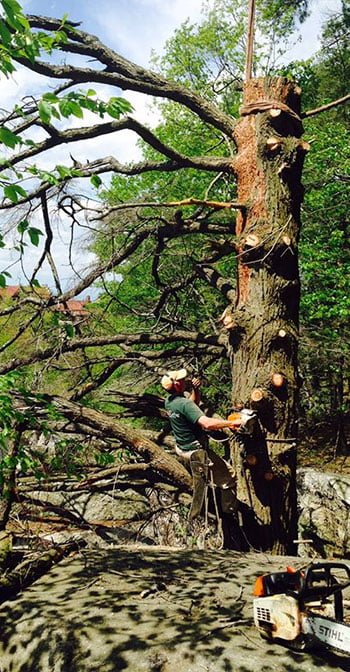If you are not happy with the height of your tree and are looking for tree toppers to help solve this problem, you may want to reconsider. Tree topping describes the act of haphazardly cutting large tree branches to stubs at the top of a tree, or removing the whole top. This practice (also often referred to as, heading, rounding over, or tipping) leaves stubs that are too small to conduct their role effectively.
The most common reason topping occurs is to reduce the size of a tree. You may believe the height of the tree is providing too much shade, or it may pose a risk at its current height. However, topping is not the correct approach to reducing height, and can actually increase risks, and damage the tree.
Tree topping can have many negative effects on your tree including:
- Stressing your tree
- Leading to decay
- Leading to sunburn
- Causing risk
- Ruining the appeal of the tree
- Expensive maintenance
Stress:
Depending on the scenario, topping can remove anywhere from 50-100% of a tree’s leaf-bearing crown. Since leaves are essentially food for trees, their removal could lead to a tree’s temporary starvation. Like humans, when faced with starvation, survival tactics kick in. For a tree, one survival method is activation of dormant buds. This activation will force rapid growth. With this growth, the tree will need new leaves as soon as possible. Without them, it will drain energy from its reserves and begin to weaken. Additionally, stressed trees with large cut wounds are more susceptible to disease and insect infestation.
Decay:
A tree is biologically prepared to systematically close off wounds beyond the branch collar at the point of attachment. If pruned or cut incorrectly, and between lateral branches, stubs form with wounded areas that the tree may not be able to close on its own. If the wounds cannot heal themselves, the affected areas will begin to decay.
Sunburn:
The leaves within the tree’s crown are not only the tree’s food source, but they also serve as a protectant from UV rays. Without the leaves absorbing the sunlight, the branches and trunk are exposed to high levels of heat and light. Like a severe skin sunburn, the burn can lead to damages on to the bark and even death of branches.
Risk:
Although one of the reasons a homeowner may want to top their tree is because of risks associated with its height, tree topping will actually increase risk of limb failure. This is because the new shoots grow too quickly, and are weak and prone to breakage.
Unappealing:
Tree toppers destroy the natural form of a tree, leaving it looking deformed and disfigured and the tree can never truly regain its natural form back.
Maintenance:
Tree topping costs will not end with one job total. If the tree is lucky enough to survive a topping, it will likely need corrective pruning and shaping within a few years. If the tree does not make it, it will need to be removed. Additionally, their unappealing look, and increased risk can reduce your property’s value and curb appeal.
Alternatives:
If your tree is too tall, or you are unhappy with its overall shape and size, there are other, more effective, alternatives to tree topping. Proper branch reduction will preserve the natural form. Methodical pruning, and removing of branches back to the point of their origin are the proper ways to reduce a tree’s size. Branches should also not be cut randomly to stubs too short to perform their essential role. In some cases, depending on the size of the cuts that need to be made, the best option may be tree removal and replacement. Replacement should be a tree species that is more appropriate in size for the site.
Knowing the proper way to maintain and prune a tree is key to survival, and its ability to thrive in its environment. Knowing how large a tree is expected to get before planting it, is important to avoid the need to reduce its size significantly in the future. For these reasons, hiring professional arborists, like the trained staff at Red Cedar, is extremely important to help avoid tree harm, damages, and costly unnecessary maintenances in the future.



